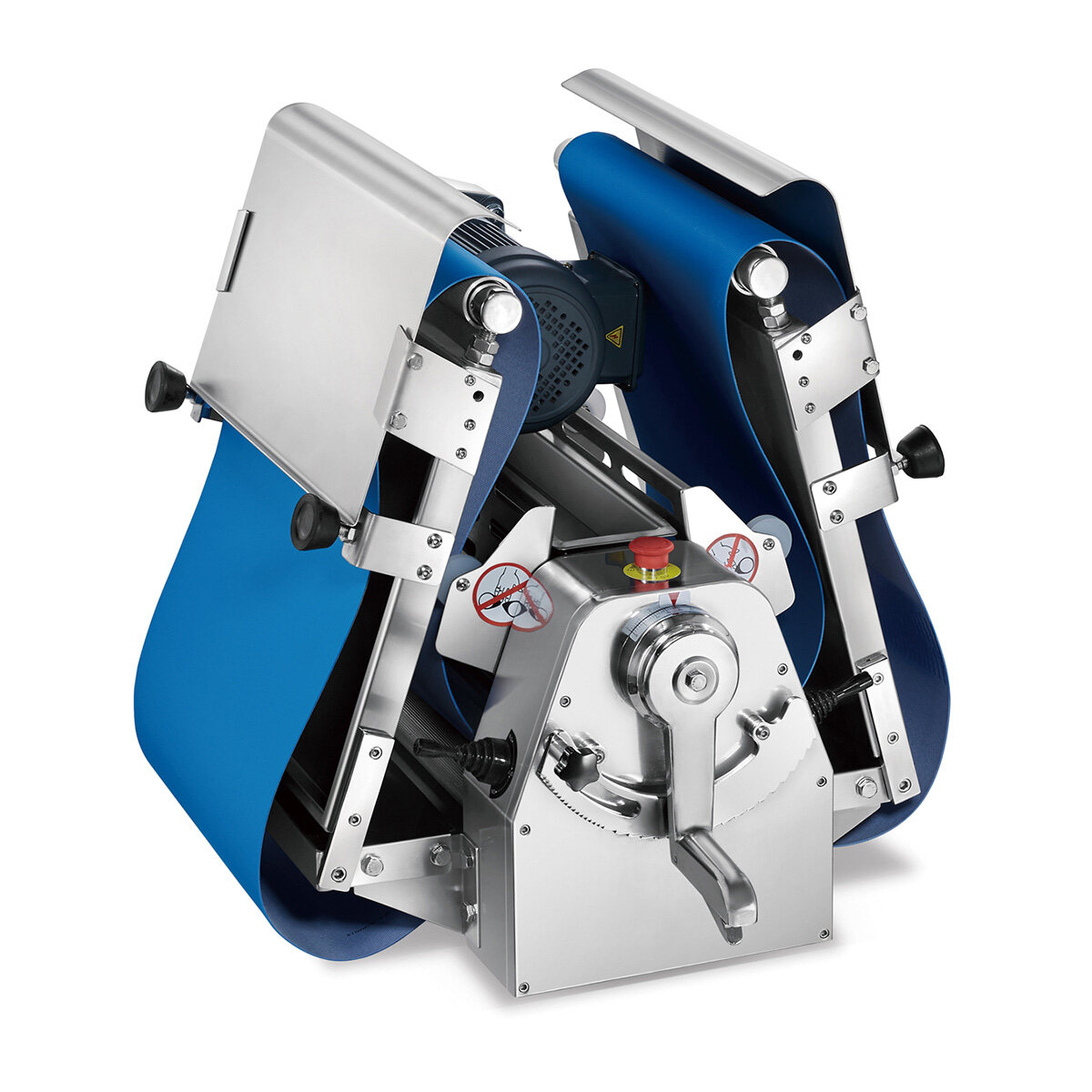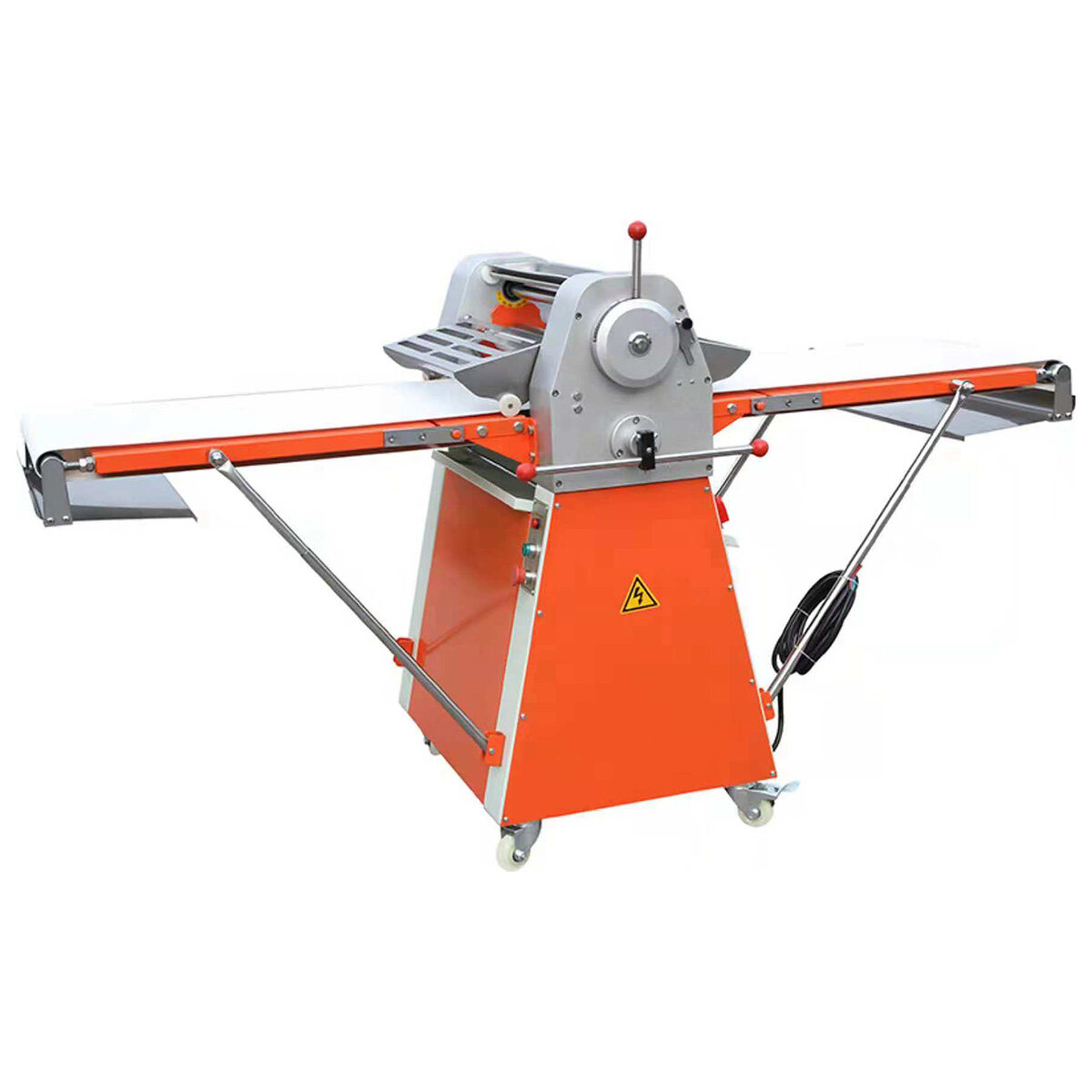Email format error
Email cannot be empty
Email already exists
6-20 characters(letters plus numbers only)
The password is inconsistent
Email format error
Email cannot be empty
Email does not exist
6-20 characters(letters plus numbers only)
The password is inconsistent


Automatic dough sheeter machines have revolutionized the way dough is rolled and sheeted in the baking industry. These mechanical devices offer numerous benefits such as increased efficiency, consistent dough thickness, time and labor savings, versatility in dough handling, and improved hygiene and food safety. In this post, we will explore the different types of automatic dough sheeter machines, their benefits, factors to consider when choosing one, operating and maintenance tips, successful case studies, and future trends and innovations in this field.
Section 1: Understanding Automatic Dough Sheeter Machines
What is an Automatic Dough Sheeter Machine?
The sheeter machine is a mechanical device that rolls and sheets dough to a desired thickness. It consists of a conveyor belt or rollers that flatten the dough evenly, allowing bakers to produce consistent and uniform dough sheets.
How Does an Automatic Dough Sheeter Machine Work?
The sheeter machines work by feeding the dough through a series of rollers or a conveyor belt. The dough is gradually flattened and stretched to the desired thickness. Some machines also offer adjustable speed and thickness settings to cater to different dough types and recipes.
Types of Automatic Dough Sheeter Machines
3.1. Benchtop Automatic Dough Sheeter Machines
Benchtop machines are compact and suitable for small-scale bakeries or home use. They are portable and can be easily placed on a countertop. These machines are ideal for rolling smaller quantities of dough.
3.2. Floor-standing Automatic Dough Sheeter Machines
Floor-standing machines are larger and more powerful, designed for high-volume production in commercial bakeries. They offer increased capacity and can handle larger batches of dough.
3.3. Conveyor Automatic Dough Sheeter Machines
Conveyor machines are equipped with a continuous conveyor belt that allows for continuous dough sheeting. These machines are commonly used in industrial bakeries where large quantities of dough need to be processed quickly.
Section 2: Benefits of Automatic Dough Sheeter Machines
Increased Efficiency and Productivity
The machines significantly reduce the time and effort required to roll and sheet dough manually. Bakers can produce a larger quantity of dough sheets in a shorter time, increasing overall productivity.
Consistent and Uniform Dough Thickness
Manual rolling of dough often results in uneven thickness, leading to inconsistent baking results. The machines ensure that the dough is rolled to a precise and uniform thickness, resulting in consistent baking and product quality.
Time and Labor Savings
By automating the dough rolling process, bakers can save valuable time and reduce labor costs. The machine takes care of the repetitive task, allowing bakers to focus on other aspects of production.
Versatility in Dough Handling
The machines can handle various types of dough, including bread, pastry, pizza, and pie crusts. They offer adjustable settings to accommodate different dough consistencies and recipes.
Hygiene and Food Safety
Manual dough rolling involves direct contact with the dough, which can lead to hygiene and food safety concerns. The machines minimize contact with the dough, reducing the risk of contamination and ensuring a hygienic production process.
Section 3: Choosing the Right Automatic Dough Sheeter Machine
Factors to Consider
When selecting an automatic dough sheeter machine, several factors should be considered, including production capacity, space availability, dough type and size, ease of use and maintenance, and safety features.
Popular Brands and Models
There are several reputable brands and models available in the market. Brand A offers Model X, which is known for its durability and versatility. Brand B offers Model Y, which is praised for its user-friendly interface and advanced features. Brand C offers Model Z, which is highly recommended for its high-speed performance and precision.
Section 4: Operating and Maintaining an Automatic Dough Sheeter Machine
Preparing the Machine for Use
Before using the sheeter machine, it is essential to ensure that it is clean and properly set up. This includes checking the rollers, belts, and other components for any damage or debris.
Loading and Feeding the Dough
The dough should be properly prepared and divided into manageable portions before feeding it into the machine. It is important to follow the manufacturer’s instructions for loading and feeding the dough to avoid any jams or malfunctions.
Adjusting the Thickness and Speed
The sheeter machines offer adjustable settings for thickness and speed. Bakers should experiment with different settings to achieve the desired dough thickness and ensure that the machine operates at an optimal speed.
Cleaning and Maintenance Tips
Regular cleaning and maintenance are crucial to keep the sheeter machine in optimal condition. This includes cleaning the rollers, belts, and other components, as well as lubricating moving parts and checking for any signs of wear or damage.
Troubleshooting Common Issues
In case of any issues or malfunctions, bakers should refer to the machine’s manual or contact the manufacturer for troubleshooting guidance. It is important to address any problems promptly to avoid prolonged downtime and ensure smooth operation.
Section 5: Case Studies: Successful Implementation of Automatic Dough Sheeter Machines
Bakery A: Increased Production and Consistency at “Delicious Delights Bakery”
- Implementation of an automatic dough sheeter machine resulted in a significant increase in production capacity.
- Consistent dough thickness ensured uniform baking and improved product quality.
Bakery B: Cost Savings and Improved Efficiency at “Baker’s Haven”
- Introduction of an automatic dough sheeter machine reduced labor costs and improved overall efficiency.
- Faster dough sheeting enabled the bakery to meet customer demands more efficiently.
Bakery C: Enhanced Product Quality and Customer Satisfaction at “Sweet Treats Bakery”
- Investment in an automatic dough sheeter machine led to remarkable improvement in product quality.
- Precise dough thickness resulted in perfectly baked goods, delighting customers and boosting satisfaction.
Section 6: Future Trends and Innovations in Automatic Dough Sheeter Machines
Integration of Artificial Intelligence and Automation
Future automatic sheeter machines may incorporate artificial intelligence and automation technologies to further enhance efficiency and productivity. These advancements may include self-adjusting settings, predictive maintenance, and real-time data analysis.
Energy Efficiency and Sustainability
Manufacturers are increasingly focusing on developing energy-efficient automatic sheeter machines to reduce environmental impact. These machines may incorporate energy-saving features such as improved insulation, LED lighting, and power management systems.
Customization and Personalization
Future automatic sheeter machines may offer more customization options, allowing bakers to create unique dough shapes and patterns. This could open up new possibilities for creative and personalized baked goods.
Conclusion:
In summary, automatic dough sheeter machines have brought significant advancements to the baking industry. They have revolutionized the way dough is rolled and sheeted, offering numerous benefits such as increased efficiency, consistent dough thickness, time and labor savings, versatility in dough handling, and improved hygiene and food safety. These machines have proven to be invaluable assets for bakeries, allowing them to increase production capacity, reduce costs, improve overall efficiency, and enhance product quality.
Looking ahead, the future is promising. As technology continues to evolve, these machines are expected to become even more sophisticated, offering enhanced features, improved efficiency, and greater customization options. Integration of artificial intelligence and automation, energy efficiency and sustainability, and customization and personalization are some of the trends that we can expect to see in the future. The machines will continue to play a vital role in the baking industry, enabling bakers to produce high-quality baked goods efficiently and consistently.